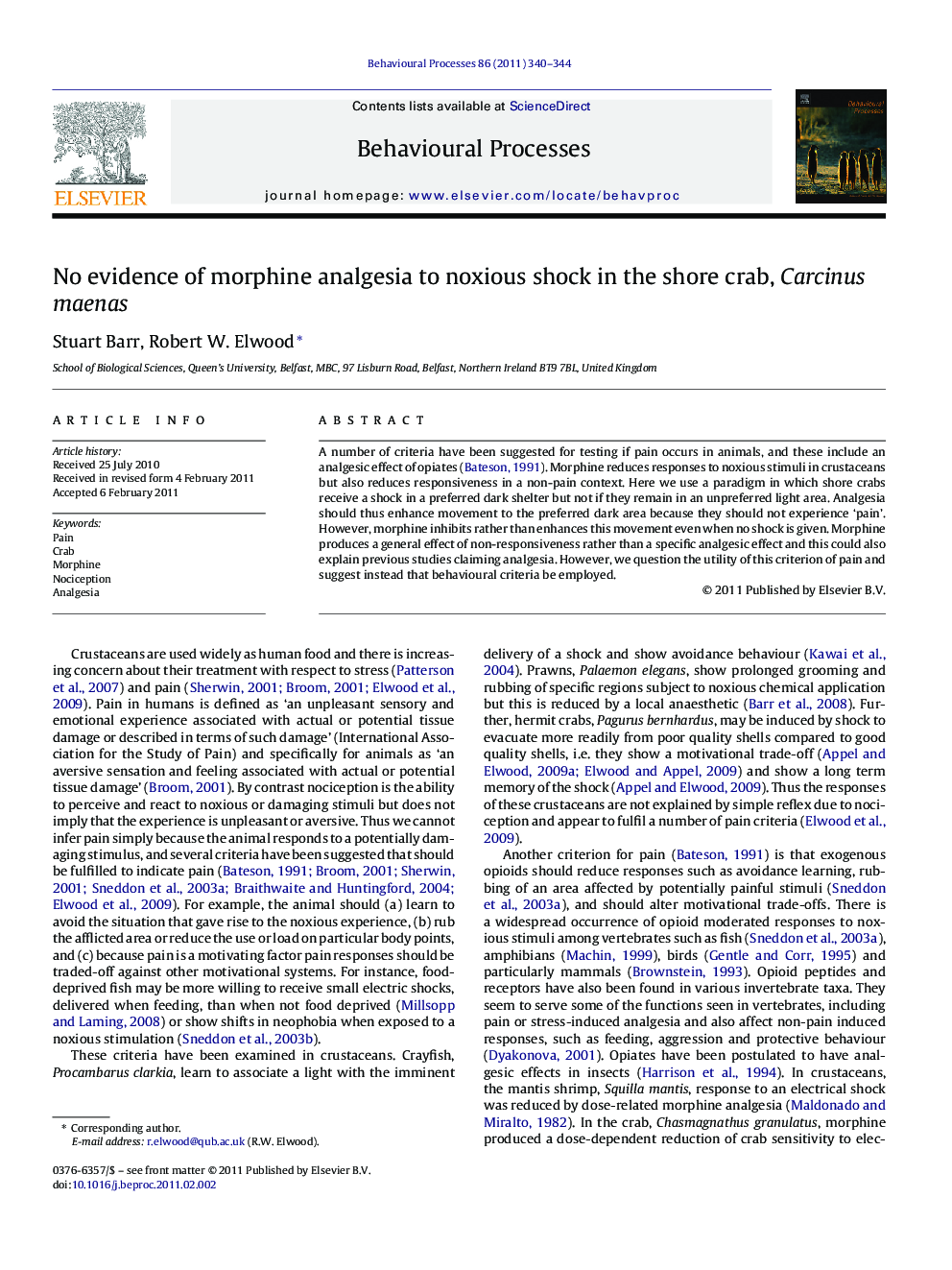| Article ID | Journal | Published Year | Pages | File Type |
|---|---|---|---|---|
| 2427334 | Behavioural Processes | 2011 | 5 Pages |
A number of criteria have been suggested for testing if pain occurs in animals, and these include an analgesic effect of opiates (Bateson, 1991). Morphine reduces responses to noxious stimuli in crustaceans but also reduces responsiveness in a non-pain context. Here we use a paradigm in which shore crabs receive a shock in a preferred dark shelter but not if they remain in an unpreferred light area. Analgesia should thus enhance movement to the preferred dark area because they should not experience ‘pain’. However, morphine inhibits rather than enhances this movement even when no shock is given. Morphine produces a general effect of non-responsiveness rather than a specific analgesic effect and this could also explain previous studies claiming analgesia. However, we question the utility of this criterion of pain and suggest instead that behavioural criteria be employed.
Research highlights► We examine the idea that morphine has an analgesic effect in a decapod crustacean. ► We use a paradigm in which crabs are allowed to repeatedly run to a dark shelter to escape from a bright light but some receive a shock in the shelter. ► We predict that if morphine acts as an analgesic then crabs with morphine will be more likely to enter the shelter as they will not experience the noxious element of the stimulus. ► Morphine initially reduced the probability of the crabs moving to the shelter irrespective of receiving shock and thus morphine is not an analgesic in these animals and thus a criterion often used to suggest pain in animals is not fulfilled for this group.
